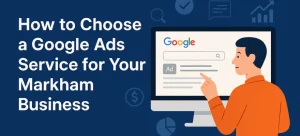Let’s be real. How much is your bad website costing you?
You’ve probably thought about it. Missed customers. Low sales. Bad first impressions. And that’s just the start.
Every slow load time, every confused visitor, and every missed sale is hitting your bottom line.
Here’s the reality. A bad website is more than just a minor inconvenience. It drains your business resources and potential profits.
Imagine this. You’re spending money on ads, social media, and marketing to drive traffic to your site. But once they land there? They bounce. Why? Because your website is outdated, has poor SEO and is ineffective. It’s like pouring water into a bucket with holes.
What Makes a Website “Bad”?
- Slow Load Times: Nobody waits for a website that takes more than 3 seconds to load.
- Confusing Layout: If visitors can’t find what they’re looking for in seconds, they bounce.
- Outdated Design: If it looks like 2010, people think your business is stuck in 2010.
- Not Mobile-Friendly: Over 50% of traffic is on phones. No mobile optimization? Say goodbye to half your potential clients.
- Missing Information: Can’t find the contact info? Forget it—they’re not calling.
- No Clear Call-to-Action (CTA): If users don’t know what to do next, they’re gone.
The Hidden Costs of a Bad Website
1. Lost Revenue
When your website is ineffective, visitors leave. And those visitors? They’re your customers.
Let’s put this into perspective. If you get 1,000 visitors a month and your conversion rate drops by even 1%, you’re leaving money on the table. Every. Single. Month.
If your bounce rate is high, your revenue is low. Period.
2. Damaged Reputation
Your website is your digital handshake. If it’s poorly designed or unprofessional, people assume your business operates the same way.
It’s not just about trust—it’s about credibility. Would you trust a business with a site full of broken links and typos? Neither would your customers.
Trust takes years to build and seconds to lose. A bad website speeds that up.
3. Lower Google Rankings
Search engines care about user experience. If your site loads slowly or confuses visitors, you’re invisible on Google.
Google ranks sites based on:
- Page speed
- Mobile responsiveness
- Quality of content
Less visibility = fewer leads = less money.
4. Increased Customer Frustration
Your website isn’t just a marketing tool, it’s often the first interaction customers have with your brand.
If they can’t navigate it easily or find the information they need, frustration builds. Frustrated customers don’t come back. Worse? They tell others to avoid you.
Fix It Before It’s Too Late
Here’s how to turn things around:
- Invest in Speed: Use tools like Google PageSpeed Insights to see where you stand.
- Simplify Your Layout: Clear menus, clean design, no clutter.
- Modernize the Look: Consider professional website design services to create a modern and effective site tailored to your business.
- Go Mobile: Test your site on phones and tablets.
- Be Clear: Show your contact info, pricing, and services upfront.
- Prioritize Content: Ensure your blog, product pages, and about section offer real value and SEO optimized.
- Add a Strong CTA: Guide visitors to take action—whether it’s buying, signing up, or contacting you.
If you’re ready to stop losing revenue and create a website that converts, book a call with our team to get started today.
Success Story: How Soluna Transformed Their Online Presence
One of our clients, Soluna, faced similar challenges with their outdated website. Visitors were bouncing, sales were stagnant, and their online presence didn’t reflect their true potential.
By revamping their design, optimizing for speed and mobile, implementing clear CTAs, and proper SEO, we helped Soluna increase their traffic by 40% and double their conversions in just three months. You can read more about this transformation in our Soluna case study.
FAQ
1. How much does it cost to fix a bad website?
It depends on the damage. Check out our pricing and packages to see what fits your needs.
Think of it as an investment. Every dollar you put in can bring 5x back.
2. Can I DIY my website improvements?
Sure, but do you have the time and skills? If not, hire someone who does.
Some tasks, like updating content, are easy to DIY. But coding and design? Better leave those to the pros.
3. What tools can help me check my site’s health?
Use Google PageSpeed Insights, GTmetrix, or SEMrush for a full rundown.
And don’t forget heatmaps like Hotjar—they show you where users get stuck.
4. How often should I update my website?
At least every two years. But keep tweaking and improving as you go.
Final Thoughts
A bad website isn’t just an annoyance. It’s a silent killer for your business.
Every visitor who bounces is a missed opportunity.
Invest in making it better. The payoff is worth it.
Think of your website as a 24/7 employee. Would you hire someone who shows up late, looks messy, and doesn’t know their job?
Neither would your customers.
Don’t let your website hold you back. Schedule a call with our team to transform your online presence today. Let’s fix it. Now!




